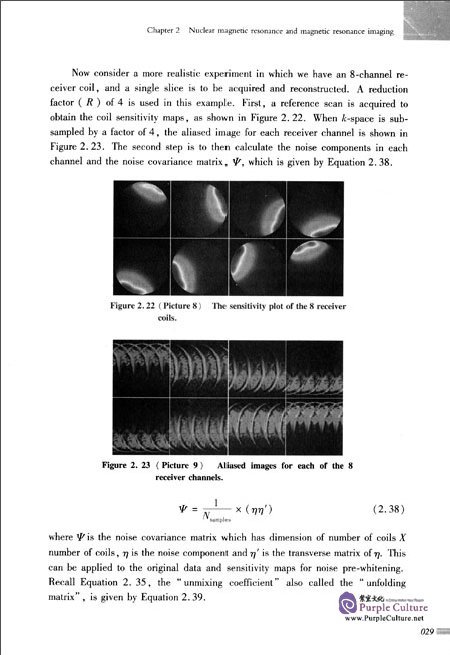Sample Pages Preview

phase encoding value yielding a different k—space line.Here a few features of the TSE sequence will be described.Firstly,there are two gradients with opposite polarities applied between two adjacent 180°pulses,the first is the phase—encoding gradient which encodes in the direction.After each echo has been sampled,the “rewinder gradient”is applied to ensure that the encoding applied to one echo does not interfere with any subsequent echoes.The second feature is the crusher gradients applied on either side of the 180°pulse in the slice select direction(not shown in the figure)to destroy any transverse magnetization generated by the refocusing pulses.
As with all MRI pulse sequences,TSE has advantages and disadvantages.The most obvious advantage is that images can be acquired faster depending on what turbo factor used,and a second advantage is that spin—echo sequences are 1ess affected by the magnetic field inhomogeneities,and the echo train is weighted rather than weighted.However,the signal—to—noise ratio is decreased.and blurring increases in the phase—encoding direction;also,the maximum number of echos that can be produced is limited by the time decav.
